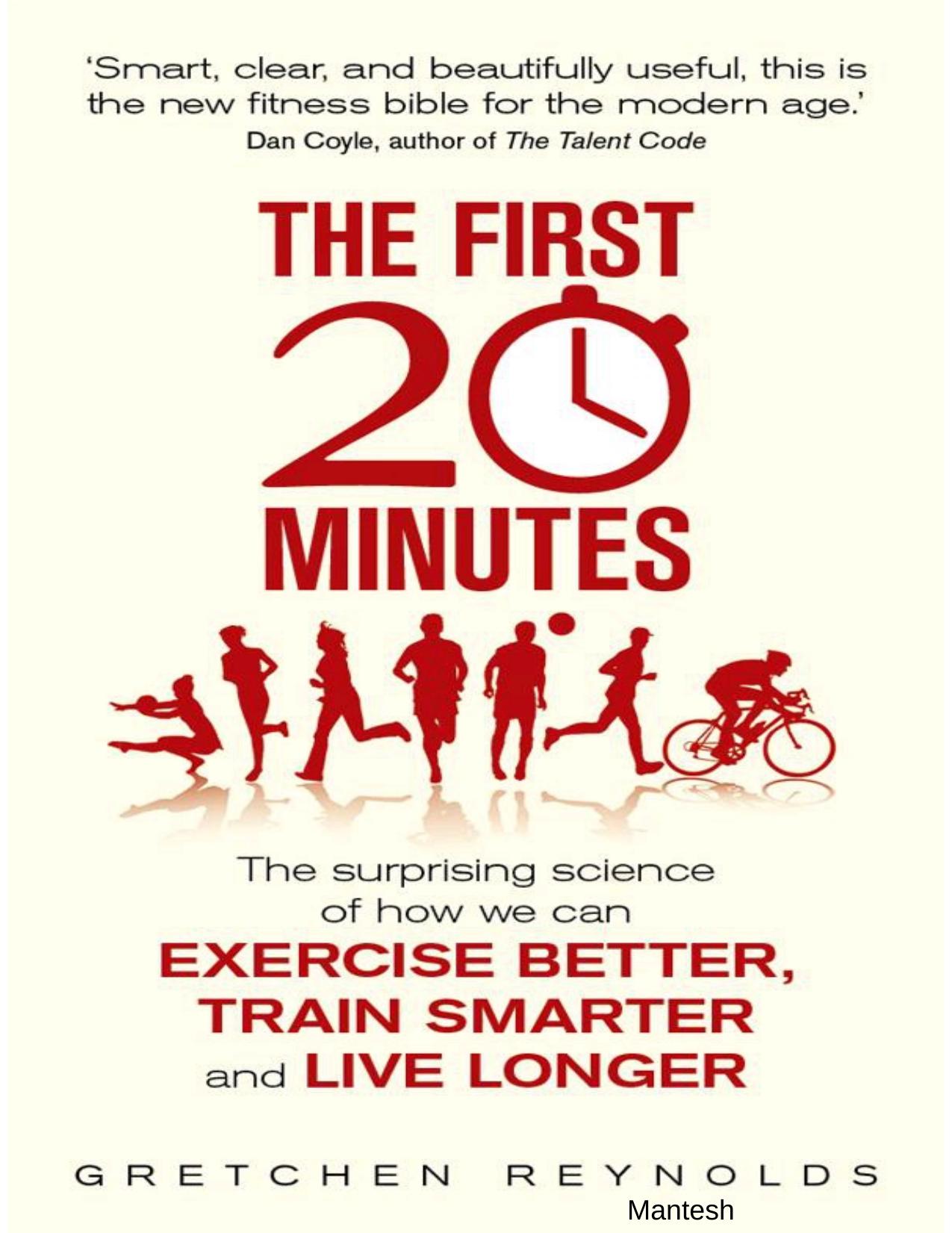The First 20 Minutes by Gretchen Reynolds

Author:Gretchen Reynolds
Language: eng
Format: epub, pdf
Tags: exercise, health, personal development, fitness
Publisher: Icon Books
Published: 2012-11-25T16:00:00+00:00
Pump Up the Neuron
An interesting recent study of what allows some cyclists to generate higher watts while pedaling than others found that it wasn’t the strength of the rider’s individual leg muscles that mattered. A cyclist might have massive quad strength but still be outsprinted by a competitor with spindlier thighs. By attaching electrodes above each of the main muscles in the cyclists’ legs and watching how the muscles lit up electrically during pedal strokes, the researchers determined that it was the coordination between muscles that determined a rider’s power limits. The better his muscles worked together, the more powerful his cycling could be.
Strength training seems to be a key to improving inter-muscle coordination. “Long before you see” any added muscle mass from a weight training program, says Avery Faigenbaum, Ph.D., a professor of exercise science at the College of New Jersey who’s studied the effects of resistance training in children, “you are probably getting neuromuscular improvements.” The nerves attached to muscle cells begin accepting and sending signals between the muscles and the brain more quickly. The connections between nerves strengthen. The moving body begins to click along more efficiently.
A few small studies have shown that people who gain almost no muscle mass while weight training, such as children and the elderly, do increase the activation of motor units within their muscles. A motor unit consists of a single nerve cell and all of the muscle cells that it controls. When more motor units fire, a muscle contracts more efficiently. So, in essence, strength training liberates the innate strength of the muscle in the young and the old, activating power that had been lying in wait, unused.
Something even more striking may be happening in adults’ muscles. A telling recent study looked microscopically at swatches of muscle tissue before, after, and while fit athletes were in the midst of a program of strenuous weight training. Skeletal muscle cells, unlike many types of cells, can have multiple nuclei, or control centers of the cells. The microscopy showed that, even early in the program, the cells from strength-trained muscles contained evidence of newly formed nuclei, as well as additional nervous system connections. Well before the athletes displayed visible, external evidence of bigger biceps or quads, their muscle cells were remodeling themselves and becoming more intricately woven into the nervous system.
Such effects have been found among people lifting very light weights. In results from studies conducted at the Brain Research Centre, at the University of British Columbia, women in their sixties and seventies who completed an easy resistance training regimen twice a week for six months performed significantly better on tests of strength, physical coordination, and even cognitive function than other comparably aged and fit women who’d joined a stretching and toning class for half a year. Although the researchers didn’t conduct muscle biopsies or other invasive procedures on their volunteers, they speculated that the resistance training had aided the women in part by stimulating their nervous systems. Resistance training requires an upsurge in brain usage, says Teresa Liu-Ambrose, Ph.
Download
This site does not store any files on its server. We only index and link to content provided by other sites. Please contact the content providers to delete copyright contents if any and email us, we'll remove relevant links or contents immediately.
| Anatomy | Animals |
| Bacteriology | Biochemistry |
| Bioelectricity | Bioinformatics |
| Biology | Biophysics |
| Biotechnology | Botany |
| Ecology | Genetics |
| Paleontology | Plants |
| Taxonomic Classification | Zoology |
Sapiens: A Brief History of Humankind by Yuval Noah Harari(14311)
The Tidewater Tales by John Barth(12625)
Mastermind: How to Think Like Sherlock Holmes by Maria Konnikova(7274)
Do No Harm Stories of Life, Death and Brain Surgery by Henry Marsh(6904)
The Thirst by Nesbo Jo(6877)
Why We Sleep: Unlocking the Power of Sleep and Dreams by Matthew Walker(6651)
Life 3.0: Being Human in the Age of Artificial Intelligence by Tegmark Max(5506)
Sapiens by Yuval Noah Harari(5321)
The Longevity Diet by Valter Longo(5039)
The Body: A Guide for Occupants by Bill Bryson(5026)
The Rules Do Not Apply by Ariel Levy(4907)
The Immortal Life of Henrietta Lacks by Rebecca Skloot(4547)
Animal Frequency by Melissa Alvarez(4424)
Why We Sleep by Matthew Walker(4394)
The Hacking of the American Mind by Robert H. Lustig(4336)
Yoga Anatomy by Kaminoff Leslie(4331)
All Creatures Great and Small by James Herriot(4267)
Double Down (Diary of a Wimpy Kid Book 11) by Jeff Kinney(4239)
Embedded Programming with Modern C++ Cookbook by Igor Viarheichyk(4137)
